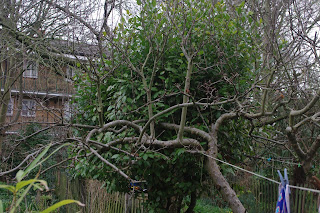Holloways are an intriguing feature of West Dorset. I've been visiting this area since I was a child, crossing and re-crossing the rolling countryside many times. Each walk suggests another, some path not trodden before or some place well worth a return visit.
Holloways are ancient routes made deep in the soft sandstone by their use over centuries in combination with the weathering action of the water that tends to drain along them. I had always referred to them as "sunken lanes" but I've become aware that various local sources call them "holloways". I note that a book on the subject written by Robert Macfarlane 5 or 10 years ago uses this term which may have revived and/or popularized it.
At the weekend I had the chance for a short break from London so I decided to head for Albion and walk some Dorset holloways...
The term sunken lane does seem appropriate in some cases, as they constitute a reasonably good surface for transit (and some have actually been made into tarmac roads).
Then again there are those where the sense of a hollowed-out way is an apt description.
There is a palpably primeval feel to these paths lined as they are with masses of ferns clinging to the sandstone sides. Ivy hangs down everywhere and among the evergreenery there are patches of Arum, Dog's Mercury, Ramsons and Bluebells whose spring foliage adds to the lushness. They will flower later in spring even in these shady confines.
It adds to the otherworldly atmosphere of these places that the roots and undersides of trees become exposed as the sandstone washes away from beneath them. It's quite strange to be looking up at the part of the tree that should be down underground.
These photos were taken following a holloway from Symondsbury via Quarry Cross that becomes Hell Lane (a name to conjure with) to North Chideock. From there I followed another holloway into the Marshwood Vale. I shall write a further entry on the subject because this locale forms the setting for one of my favourite novels, the thriller 'Rogue Male' published in 1939...


















































